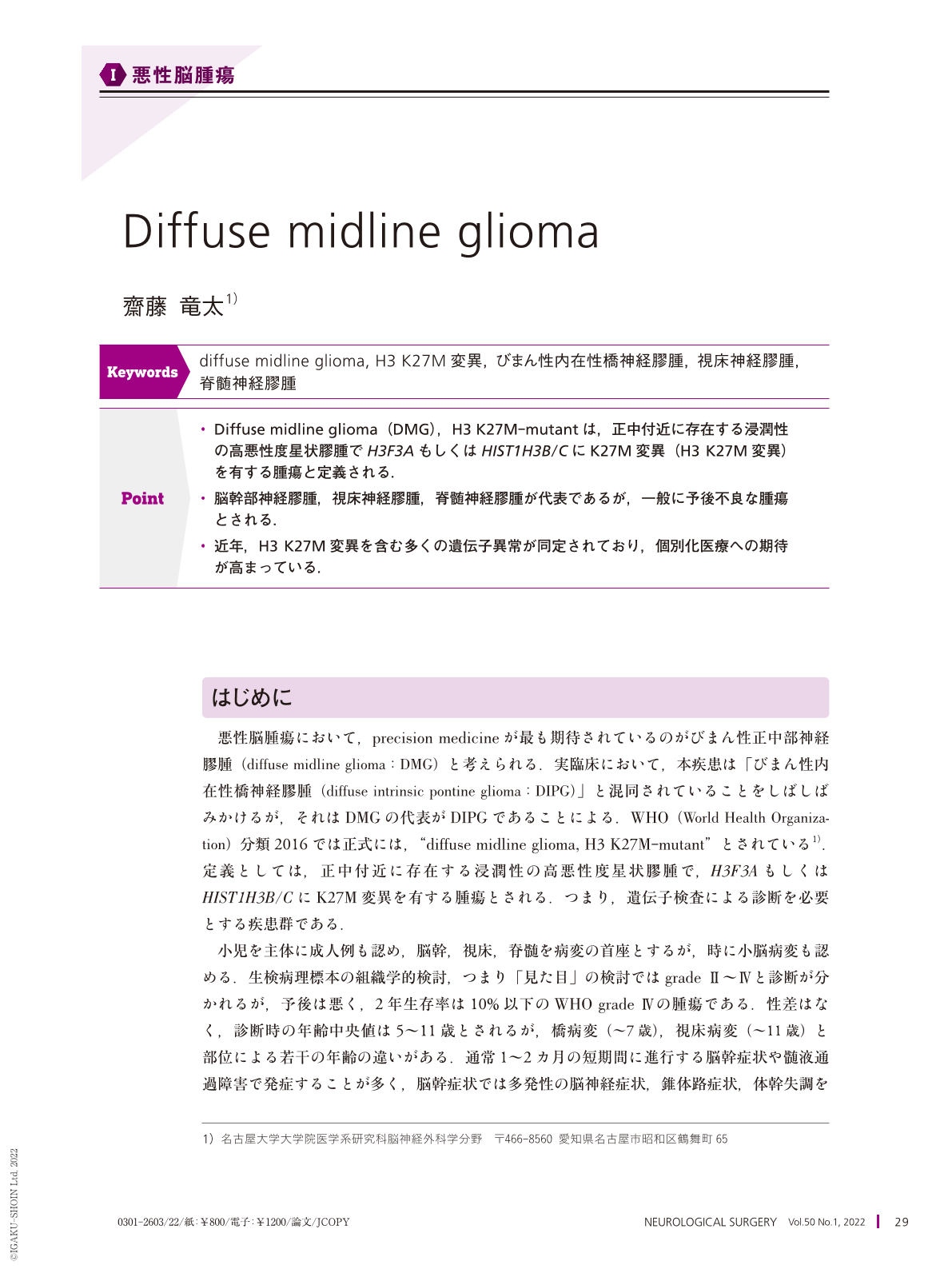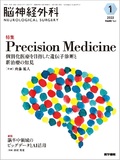Japanese
English
- 有料閲覧
- Abstract 文献概要
- 1ページ目 Look Inside
- 参考文献 Reference
Point
・Diffuse midline glioma(DMG),H3 K27M-mutantは,正中付近に存在する浸潤性の高悪性度星状膠腫でH3F3AもしくはHIST1H3B/CにK27M変異(H3 K27M変異)を有する腫瘍と定義される.
・脳幹部神経膠腫,視床神経膠腫,脊髄神経膠腫が代表であるが,一般に予後不良な腫瘍とされる.
・近年,H3 K27M変異を含む多くの遺伝子異常が同定されており,個別化医療への期待が高まっている.
Diffuse midline glioma(DMG), H3 K27M-mutant is an infiltrative midline high-grade glioma with predominantly astrocytic differentiation and a K27M mutation in either H3F3A or HIST1H3B/C. It is commonly located in the brain stem, thalamus, and spinal cord. DMG is predominant in children but can occur in adults. Brain stem disease, known as diffuse intrinsic pontine glioma(DIPG), is the representative: 〜80% harbor the H3 K27M mutation. Generally, the prognosis of DMG is poor: the 2-year survival rate is < 10%, despite intensive research and therapies. Consequently, radiation is the only treatment and there is no effective chemotherapeutic regimen. The recent findings concerning the genetic profiles of DMG shed light on precision medicine. Until today, approximately 250 clinical trials with molecular targeted therapy as a strategy have been conducted for different biological pathways in DMG. Unfortunately, none of them has shown significant efficacy for DMG. One of the problems in these clinical trials is insufficient knowledge of whether the used molecular targeted agents penetrate the blood-brain barrier. Continuous efforts to develop effective precision medicine against DMG should pave the way for overcoming DMG in the future.

Copyright © 2022, Igaku-Shoin Ltd. All rights reserved.


